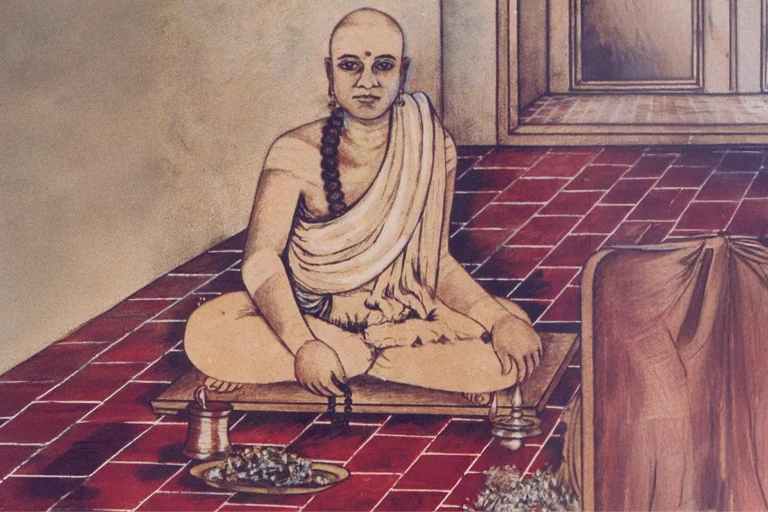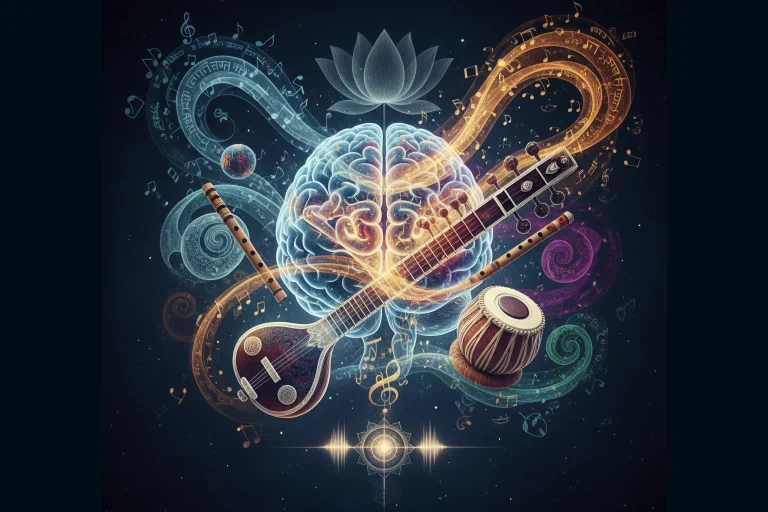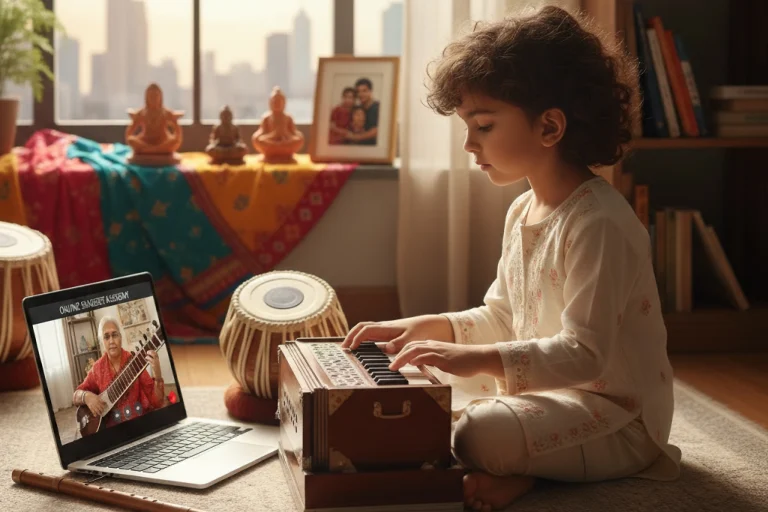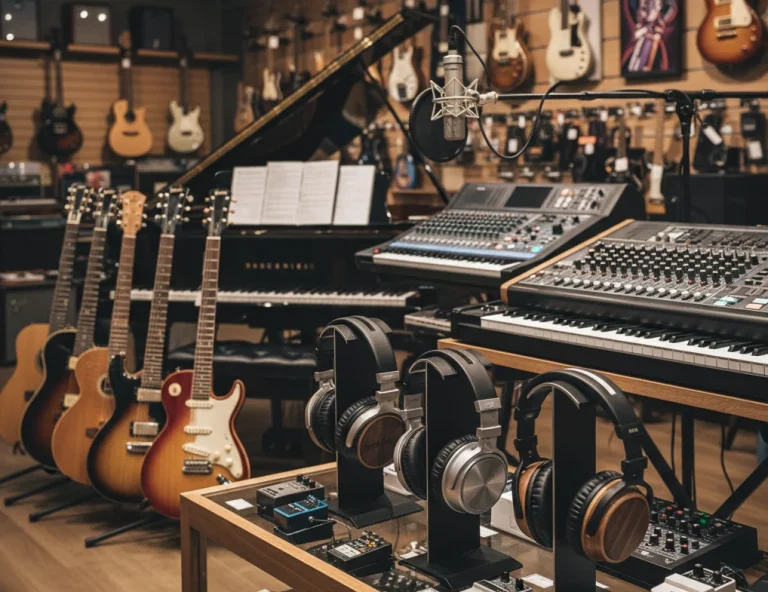All Topics
- Alchemizing Music Concepts for Students
- Artist Spotlight
- artium gift card
- Artium Maestros
- Artium News
- buying guide
- Carnatic Music
- Devotional Music
- Editorials by Ananth Vaidyanathan
- Film Music
- Guitar
- Hindustani Classical Music
- Indian Classical Music
- Indian Folk Music
- Insights
- Instruments
- Karaoke Singing
- Keyboard
- Kids Music
- maestros
- Music Education
- Music for Kids
- Music Industry
- Music Instruments
- Music Legends
- Music Theory
- Music Therapy
- Piano
- piano guide
- Success Stories
- Tamil Film Music
- Telugu Film Music
- Time Theory
- Tools
- Uncategorized
- Vocal Singing
- Vocals
- western classical music
- western music
- Western vocal music
A Brief History of North Indian Classical Music
A Brief History of North Indian Classical Music
.webp)
Table of Contents
Known as one of the most revered and intricate musical traditions in India, North Indian Classical Music has established itself as a genre that is intertwined with the spiritual, philosophical, and cultural fabric of the subcontinent. Coming from the northern regions of India, this rich musical tradition has grown from ancient Vedic charts to incorporating Islamic and Persian themes, allowing it to grow and present itself as the amazing genre that it is now.
Also known as Hindustani Classical Music, it has been long considered a medium for spiritual and emotional expression to convey feelings of depth. At its heart, there are two fundamental concepts:
- Raga: Ragas are melodic frameworks that allow for improvisation and composition. More than a scale, they are emotions evoked through the artist’s understanding and interpretation. In Indian classical music, each raga has a specific set of rules that govern the selection and progression of notes. Ragas are also associated with different times of day or season, which can evoke emotional responses.
- Tala: Known as the rhythmic aspect of the music, it is structured around cyclical time patterns. Talas consist of specific beats called matras which are arranged into cycles that can be slow or fast, meditative or energetic as required.
The impact of North Indian classical music on other musical traditions is profound. The depth it reaches, the nature of improvisation, the connection to spirituality—all of these have allowed North Indian classical music to become a vital force for the entire music industry.
Origins and Early Development
North Indian Classical Music can be traced back to the ancient Vedic period, making it one of the oldest musical traditions in the world. Various chants, a musical system, and rhythmic cycles were discovered in a few Vedic scriptures dating 6,000 years old. The Vedic tradition viewed music as a divine form of expression, closely linked to the cosmos and human spirituality.
In the Vedic Period, music was not the complex structure that we see today; rather, it was an important part of ritualistic practices. One of the four Vedas, the Sama Veda, prioritises music and chant, unlike the Rig Veda, which is a collection of poems. The Vedic hymns focus on a strict intonation and pitch system. The recitation of these hymns was believed to have spiritual and healing powers, laying down the idea that music could be used for more than just entertainment but also as a means of communication between the mortals and the divine.
Throughout the Upanishads, the spiritual aspects of music were refined even more. The focus was shifted from ritualistic practices to a more metaphysical and contemplative understanding of the universe. This brought music into the world of personal enlightenment and self-realisation. This philosophical aspect continues to influence North Indian classical music, where sound is revered as a divine part of life.
Medieval Period and the Bhakti Movement
Hindustani Classic music reached its development peak during the mediaeval period. Instruments like Sitar and Tabla were made during this period. Indian Classical music evolved quite a lot during this time due to Persian influences, which allowed it to grow tremendously.
A significant event during this period was the Bhakti Movement – A widespread devotional movement that highlighted personal devotion and the public’s connection to God. It sought to simplify religious practice and make it more available for regular people. They also decided to move away from a formalised show of devotion to one of love.
This movement had a profound impact on North Indian classical music, giving rise to new musical forms and styles that emphasised spiritual and emotional connections. As saints and poets across India composed and came up with new songs, they slowly brought them closer to the common people and created a kind of devotion or ‘bhakti’ towards the genre. All of this slowly allowed Indian classical music to evolve incredibly.
History of Evolution
During the Mughal Era, North Indian classical music went through several changes, being influenced by the Persian and Indian styles. It has evolved so much due to the various epochs and legends that have left their mark on the tradition. The Royal Courts were crucial in providing an environment for music to fully prosper. Along with new instruments, music theory and practice were formulated at this time, which is something that will keep having an incredible impact down the road.
The Mughal Courts became a centre for cultural influence and artistic patronage. Here, music, painting, poetry and architecture were widely supported and celebrated. Musicians were regularly invited to come and perform, which led to multiple interactions between Indian and Persian musicians. Here, their interactions led to the creation of new styles and the refinement of existing ones. Under the Mughal Court, musicians worked to formalise the theory and practice of music. In a time of codification, various ragas and talas were catalogued and the rules for their performance were systemised. This was not the end. New instruments were created during this time and they had an incredible effect on the genre.
Prominent Instruments and Styles
During the Mughal Period, quite a few new instruments were made and had an impact on Hindustani classical music. If you wish to learn Hindustani music, some of these instruments will come into play. Take a look:
- Sitar: The sitar is perhaps one of the most iconic instruments used in North Indian classical music. It comprises a long neck and a resonating body that is typically made from a gourd. With 18-21 strings, it can create numerous combinations that sound rich and complex. The sitar is known for having expressive capabilities and for its versatility. This allows musicians to produce intricate melodic patterns.
- Tabla: The tabla is a pair of hand-played drums which are the ‘dayan’ (the smaller, higher-pitched drum made of wood) and the ‘bayan’ (the larger, lower-pitched drum made of metal, clay, or a few other materials). It is known for its intricate rhythms and the flexibility it offers. A tabla player uses a number of strokes and techniques to create incredible sounds that complement either a singer or other instruments.
- Sarod: A fretless string instrument, the sarod can create sounds that are deep and resonate with the audience. Consisting of a wooden body with a metal stringboard and normally 17 strings, it allows for a higher focus on nuance and improvisation. A sarod is played with the help of a plectrum/pick called mizrab. The smooth, sliding notes produced allow you to create a rendition of ragas that could stick with you.
With the evolution of North Indian classical music, the establishment of ‘Gharanas’ came soon after. Each was characterised by various unique interpretations, techniques and regional influences. Some of the distinctive styles are:
- Gwalior Gharana: One of the oldest and most influential–Gwalior is known for implementing traditional styles. Marked by its adherence to classical purity, structured compositions and intricate rhythmic patterns make an incredible journey to listen to.
- Agra Gharana: The Agra Gharana is known for its emphasis on emotional expression and rhythmic patterns that are extremely intricate. Often highlighting powerful vocal techniques, the Gharana places a strong emphasis on improvisation and its deep, resonant vocal style.
- Banaras Gharana: Emphasis on light, melodic singing and intricate ornamentation is what the Banaras Gharana is known for. It provides a focus on expressive and improvisational techniques while highlighting the emotional essence of ragas.
- Jaipur Gharana: Technical precision and clarity in performance are what make up the Jaipur Gharana. Musicians from the Jaipur Gharana often emphasise rhythmic complexity and structured compositions, making it a favourite amongst sitar and sarod players.
Notable Musicians and Performers
North Indian classical music has had many virtuosos and legends who made their impact and helped evolve it. If not for these people, who knows where Indian classical music would be right now? Let’s take a look at some of them:
- Pandit Ravi Shankar: Born in Varanasi, India, Ravi Shankar was one of the biggest virtuosos and legends in Indian classical music. He established himself as one of the most recognisable performers in the world because of his incredible ability to play the sitar. He played a pivotal role in popularising North Indian classical music globally.
Performing at major events like the Monterey Pop Festival in 1967 and Woodstock in 1969, he gave the chance to a whole new audience to experience that magic that is Hindustani classical music. He also composed for films like Gandhi and Pather Panchali, giving classical music a position to be integrated into cinema.
- Ustad Vilayat Khan: Son of Ustad Inam Ali Khan, Ustad Vilayat Khan was a celebrated sitar player, coming from the Imdadkhani Gharana which is known for its improvisational style. Learning from a young age, he came up with a unique approach which blended traditional ragas with personal expression.
He usually focused on emotional depth and intricate ornamentation. Being able to seamlessly blend classical elements into modern music elements, he made his performances available to a larger audience. He helped introduce the sitar to a global audience and inspired a generation of musicians through his recordings and concerts.
- Ustad Zakir Hussain: Born in Mumbai, Zakir Hussain is a master tabla player and composer. Known for his exceptional skill and contributions to North Indian classical music, he has established himself as one of the most revered musicians of all time.
Zakir Hussain is known for bringing the table to a global stage, taking elements from both Indian classical and Jazz music. Along with his numerous performances, he was also heavily involved in teaching students. Creating platforms for cross-cultural musical exchange and mentoring young musicians has turned him into a key figure, in both Hindustani classical music and the broader world music scene.
Impact on Other Genres and Fusion
North Indian classical music has left a mark on the music industry across the world. From influencing Bollywood and cinematic scores to Western genres like Jazz and Pop. This is where fusion music started to take off, allowing for the chance to broaden the creative aspects and abilities of everyone involved.
- Classical music has left a huge mark on Bollywood and film scores. Many Bollywood composers use traditional ragas to create their evocative rhythms, and quite a few songs are based on ragas and portray emotional and spiritual depth.
- Many Indian musicians tend to collaborate with regional artists to bring a unique blend between classical and regional music. This gives the chance to create a new fusion that embraces the best aspects of both worlds.
- The connection between jazz and Indian classical music dates back to the 1950s and 60s when artists like John Coltrane began experimenting with tunes from both worlds. Eventually, several artists began mixing the various tunes, beats and rhythms of both genres and took the time to create something uniquely incredible.
- Ragas have influenced many Western artists, adopting the various styles of classical music into their compositions, whether it be for film scores or original songs. The same goes for lyrical songs. The vocal aspects of classical music have been incredibly influential in the music industry. If you choose vocal classes online, understanding these fusions will be an important part of your learning.
Conclusion
North Indian classical music is one such genre that has made itself one of the titans in the music industry. From the Mughals to Modern Rock legends, musicians have been enticed by the sheer power of classical music. This speaks volumes about the global appeal Indian classical music has had on all other forms of music.
But to get there, you need to practise. Taking classes, especially online, will present you with a chance to grow both your passion and your abilities from the comfort of your home. The teachers at Artium Academy can help you embrace your musical side. If you also find yourself enticed by classical music, why not follow that intention? Start your classical music journey!







This is a wonderful and concise history of North Indian Classical Music. It’s so important for students to understand the roots of the tradition they are learning.
As a Tabla educator at Tablatheka.com, I find that understanding the history of the instruments themselves is key. The Tabla’s own evolution, for example, is a fascinating story that is deeply intertwined with the development of musical styles like Khayal and Thumri over the centuries.
Thank you for sharing this valuable historical context for aspiring musicians!